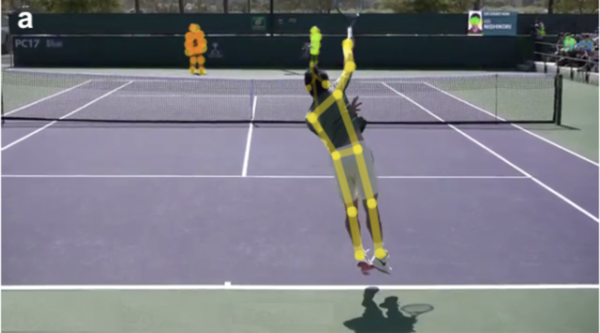Analysis of professional and amateur tennis serves using computer pose detection
(1) The American School in Japan, Tokyo, Japan, (2) Tokyo Coding Club, Tokyo, Japan
https://doi.org/10.59720/21-168
Incorporating computer vision and machine learning into sports is an effective and efficient way to improve players’ skills. It is often quite challenging to know specifically where a player can fix their performance just by playing or looking at videos. Advances in computer vision allow one to convert generic video imagery of a person to generate limb coordinates as a function of time and apply that to analyze the tennis serves of professionals, semi-professionals, and amateur players. We hypothesized that the overall movement of different players’ serves is similar despite their skill level, but the key difference is the timing during the serve at which their racket makes contact with the ball. We analyzed video imagery of 23 different tennis players serving, with each player having 4 to 5 serves, and generated x-y coordinates of the players’ limbs throughout the duration of the serve. We then analyzed the full dynamics of each players’ serve and identified key differences between players of varying skill level. Based only on the different timing between skill levels, we were able to determine the skill level of players from a generic video. Identifying clear differences between professional and amateur athletes can greatly improve the focus of training and technique.
This article has been tagged with: